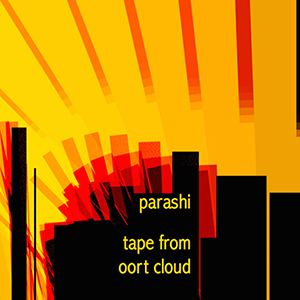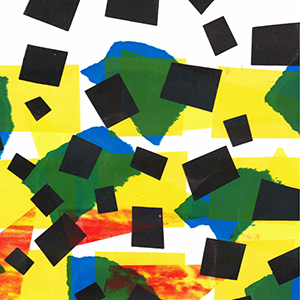 Having recently put out a double disc package with Anthony Pasquarosa, and another collaboration with Noise Nomads, the Albany, New York area noise master Mike Griffin has managed to compile yet another set of spacey, at times aggressive, but always fascinating abstract electronics. The first is a full vinyl LP of solo work, courtesy of the always amazing Sedimental label, and the second a collaborative release with meme slinger John Olson. Griffin's style is consistent between the two work, but the differing contexts give each a unique and distinct feel, differing from one another.
Having recently put out a double disc package with Anthony Pasquarosa, and another collaboration with Noise Nomads, the Albany, New York area noise master Mike Griffin has managed to compile yet another set of spacey, at times aggressive, but always fascinating abstract electronics. The first is a full vinyl LP of solo work, courtesy of the always amazing Sedimental label, and the second a collaborative release with meme slinger John Olson. Griffin's style is consistent between the two work, but the differing contexts give each a unique and distinct feel, differing from one another.
Sedimental/Skell, Radical Documents
The Oort Cloud referenced in the album's title is a theoretical cloud that is wrapped around our solar system, collecting and shaping what detritus of our cosmos may be passing through.It is a fitting title, given that there is a celestial, yet fragmented feel throughout the album.Griffin's work has never easily been categorized, since it often draws from the chaotic lands of harsh noise, but at the same time also gentle passages of ambient, and the blips and beeps of early electronic music.On "The Vanishing Coast" this is quickly established via shimmering feedback and idling engines, accented with a heavy bass pulse throughout.From this he begins to add in even more elements:falling, twinkling stars and jazzy simulations of small animal chirps all appear.As a whole the piece brilliantly juxtaposes sputtering, erratic bits and sustained drone elements, with the occasional wide open space for remains of sound to drift through.
"Broadcast Failures" has a colder vibe, with sputtering duck calls and swells of static setting the stage.There is more of 1960s science fiction feel here, with squeaking computer glitches and electronic beeping throughout.Again, Griffin nicely blends these cleaner, tonal sounds with some good heavy crunch as well.Things lean a bit psychedelic as he reverses the layers, and with the combination of sparse mixing, spacey movement and bleak falling tones, it makes for a frigid, cosmic journey.
On the flip side, Griffin scales back the entropy and focuses more on sustained sounds and tones."Tape from Oort Cloud" may lead with a heavy low end rumble, but for the most part Griffin keeps the electronics restrained, having an overall muted feel with some outbursts of sound to be had.Some lighter passages appear throughout, but overall the sense is more grounded and depressive.After a series of raygun-like pulses, he introduces a melodic sequence that propels the piece to a gentle conclusion."Depths of Babylon" may begin with a cascading bass crunch and metallic buzz, but Griffin's use of loops and melodic passages result in the record ending with an almost new age hue.
samples:

It is no surprise that for the 7" with John Olson (in his Spykes guise), Griffin's work ends up a bit harsher in nature.The A side has his usual cosmic electronics, but there is more of a dingy basement production here, so the reverberation of his electronics, with Olson's pained horns, makes for a creeping, menacing type feel to the proceedings.On the other side, the duo goes a bit more into free jazz realms.Olson's loose and improvised horn lines bounce off Griffin's waxy electronics perfectly.
Braille License Plates for Sullen Nights is certainly a fun excursion, but like any single released near a full-length record, Tape from Oort Cloud is where Parashi goes all out.I have been into all of Mike Griffin's collaborations in recent years, but the solo album format allows him to truly reach out and do what he does best.Complex, nuanced, and thematically strong while drawing from all varieties of electronic music and sound art, it is easily his strongest work to date.



